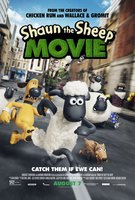
Shaun the Sheep The Movie trailer
Following his introduction in Nick Park’s Wallace and Gromit: A Close Shave, the woolly star, Shaun the Sheep, received his own spin off show creatively named Shaun the Sheep. Nearing the 20th anniversary of the nation’s introduction to him, the eponymous sheep was given his own movie. Shaun the Sheep The Movie follows the antics of the mischievous Mossy Bottom Farm animals’ adventures. One day the ringleader of the flock, Shaun, decides they need a break from the dull routine of farm life. Unfortunately, their plan goes wrong and the farmer hurtles into the big city asleep in a caravan, ultimately winding up in hospital with memory loss. The sheep and loyal sheep dog, Bitzer, find themselves out of their usual country dwellings in the big city dodging detection from humans and avoiding evil pest control. The flock desperately search the city, whilst, unbeknownst to them, their beloved owner has risen to fame in the hairdressing world with his unconventional shearing style.
Shaun the Sheep The Movie falls into the genre of the family comedy, with bright colours and familiar animals catering for a younger audience, whilst mature jokes and broader themes please adults. The film is playful with references to other movies and genres which adults understand, for instance the cat in pest control parodying Hannibal Lecter. References being converted from human into animal form elevates the comedy, and implements anthropomorphism.
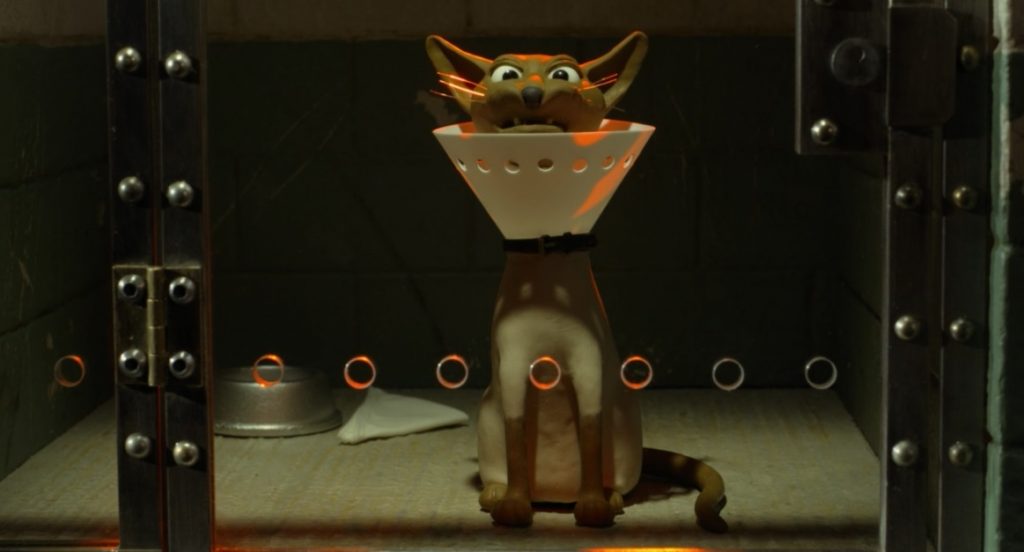
The film also falls into the adventure genre as the sheep go on a journey to save their farmer whilst dodging perilous situations. Despite a larger budget, the creators stuck to their humble roots of Claymation, constructing scenes from clay and using stop motion animation to bring them to life. However, Shaun the Sheep The Movie deviates from its Aardman predecessors, including Wallace and Gromit and Chicken Run, by omitting dialogue. Verbal communication for both animals and humans is restricted to grumbling and animal noises such as barking and baahing indicating words. This shifts the genre of Shaun the Sheep Movie past a children’s animation, but to silent comedy, in fact taking inspiration from Buster Keaton. The makers draw on visual slapstick elements to produce the humour.
Starzak and Burton negotiate the tension between animalism and anthropomorphism in Shaun the Sheep The Movie, engaging with anthropomorphic qualities in the animals but they still retain animal-like behaviours. Unusually, there is a self-consciousness of anthropomorphism; the animals are aware of their abilities to shift between societies and use this to their advantage. Their intelligence is unnoticed by humans, disguised by pre-empted ideas of animals. It is ambiguous where the line between animal and human falls.
Animals in the film have agency, Shaun especially is aware that he can initiate action. Undisguised, in front of humans the animals walk on all fours, with gormless expressions. Suddenly, they switch to walking on hind legs, and they have a complete awareness of human social conduct. A great example of this is when Bitzer is banned from the hospital as he is a dog. Dejectedly he walks over to a bench on all fours, then sits on it upright as a human would. It is this seamless switching in behaviour which is so significant in Shaun the Sheep the Movie, and unusual in animated animals.
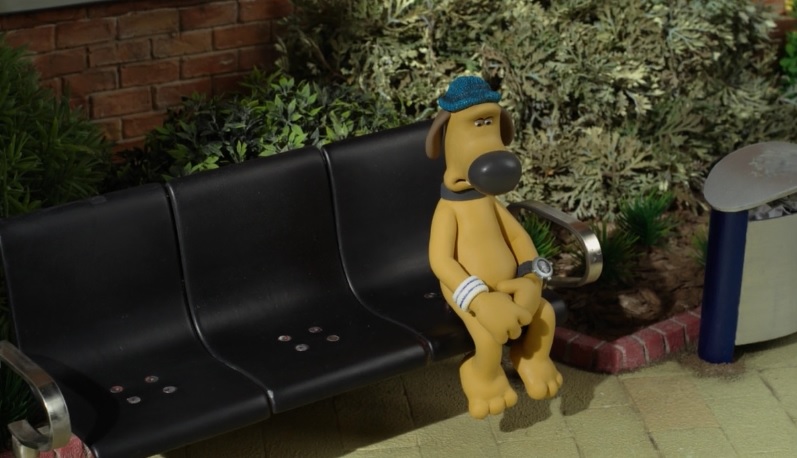
Typically, in children’s animated films animals are a self-contained society, but still with elements of human societal rules. For example, in A Bugs Life or The Lion King there are no humans to interact with, yet they follow societal rules familiar to us. Using domesticated animals allows the writers to engage with an overlap which explores human animal relations, and develop empathy.
Bitzer is the closest animal to full anthropomorphism in his role as the stereotype of ‘man’s best friend’. Bitzer is the most sensible, consistently trying to control the sheep. He is immediately recognised as anthropomorphic by his hat. Jacques Derrida identified in The Animal That Therefore I Am that “in principle, with the exception of man, no animal has ever thought to dress itself. Clothing would be proper to man, one of the “properties” of man”, yet Bitzer possesses this ‘property’.[1] Nakedness and clothing are human constructs. The sheep’s animal identities are hidden when they wear human clothing, it masks them as this one of the concrete distinguishers between humans and animals.
Contrastingly, the humans exhibit animalistic qualities themselves, subverting our expectations of our own species. The realms of animal and human seem to adopt the same spheres as they both exhibit an each other’s qualities. The farmer, for example, rises to fame by shearing human hair as he would sheep. Flashback materialises on screen, as he begins to shear the celebrity to produce a direct comparison between human and sheep earlier in the film. A hazy fade is edited into the edges of the frame to exaggerate that this is a dreamlike flashback. Commercialising the sheared style transcends the human-animal realms, their hair is the same and thus equalising. The two techniques apply very differently in society but are the same conceptually.
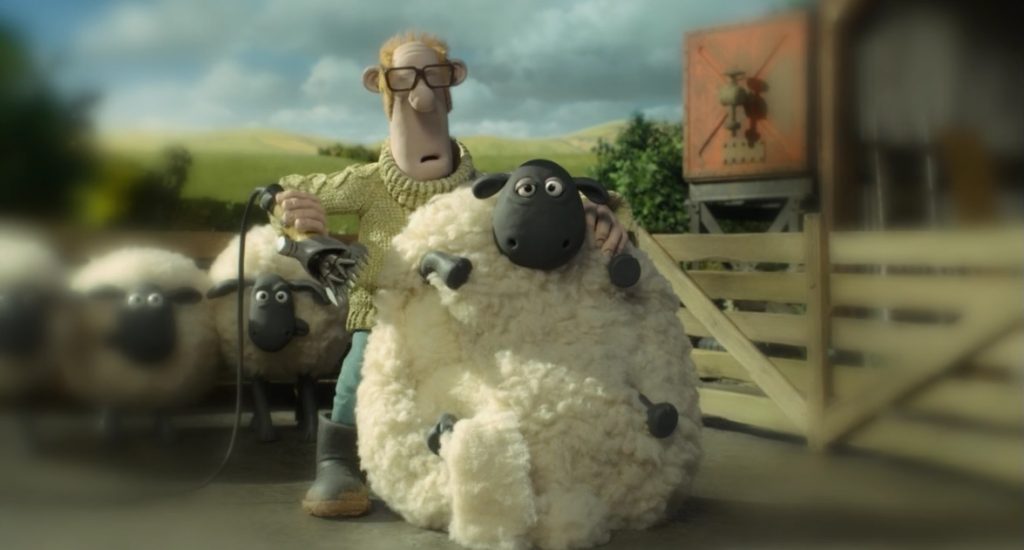
Restricted communication for both species also equalises the animals and humans, placing them in the same sphere. Communication is stripped to gruff mumblings and animal noises to indicate speech – there is no dialogue. There is a communication breakdown between humans and animals in reality. We do not understand them as they do not share our language, thus the film limits human language to maintain this ambiguous distinction between the two. It therefore uses elements of silent comedy to force the characters into a familiar, humanised idea.
The animals exhibit archetypal moral codes of humans, which acts as a leveller between characters. Despite being a different breed they engage with our society’s ethics. In his glossary to Animation: Genre and Authorship, Paul Wells defines anthropomorphism as having the ability “redefine or merely draw attention to characteristics which are taken for granted in live action representations of human beings” thus these Claymation figures can illuminate elements of morality usually overlooked.[2] For instance, Bitzer spends much the film attempting to discipline the flock, so he understands right and wrong. We may not acknowledge this in human films, but it is amusing to see these emblazoned in a dog’s moral code. However, he is a service dog whose job is to herd sheep, so we must question whether this is automatic, or if it is a pseudo-moral code, learned through relentless training.
Human morals are engaged through the idea of a family unit, despite being an unconventional one. The residents of Mossy Bottom Farm comprise this alternative family. The opening scene sees baby Shaun and Bitzer showing affection to the farmer, the film challenges the family unit throughout demanding them to stick together as they face peril. Family roles are fulfilled, as the Farmer is the father, mother sheep, baby Timmy. The roles are identifiable to children watching. The family unit is central to the plot, and is the factor which saves them from the crazed Trumper, as the farmer reminisces about the original childhood image of them. Animals demonstrate the importance of families to young viewers, through a sense of unity and devotion.
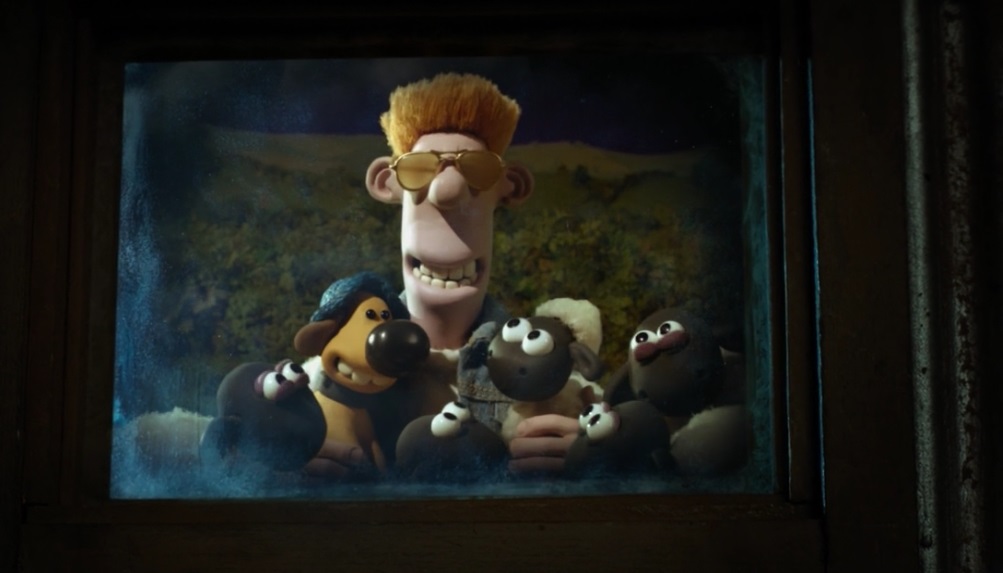
Shaun the Sheep The Movie redefines our concepts of intelligence. Similarly to other Aardman films, a common theme is animal intelligence being underestimated by human characters. For instance, in Chicken Run, Mrs Tweedy spits “they’re chickens you dolt. Apart from you, they’re the most stupid creatures on this planet. They don’t plot, they don’t scheme, and they are not organised”.[3] The farm animals are wildly underestimated and, in fact, build a plane to escape. Similarly, in Shaun the Sheep The Movie, the sheep have a firm grasp on human concepts, and frequently deceive humans, for example constructing a pantomime horse-style getaway. They seem exasperated by humans, who are portrayed as idiotic. It is amusing that a sheep is the instigator in the wild plans, when they are stereotypically dumb creatures who follow the herd as opposed to leading.
Whilst aesthetically Shaun The Sheep The Movie is colourful and childlike, it also explores dark social critiques of human prejudice and treatment of animals. Animals are placed in these positions, fenced in and treated as mundane. Humans have a position of power, and Aardman films comment on animal potential to defy it. Animals are exploited for their material goods, in Shaun the Sheep for wool, but more sinisterly in Chicken Run for their meat. Children’s films raise ethical questions of if animals should be kept and treated this way. Starsak and Burton successfully make us invest emotionally in Claymation sheep by associating them so closely with humans. This investment allows the directors to explore deeper themes, for example animal cruelty and prejudice of intelligence. Our own stance and morality is challenged. Paul Wells, in The Animated Bestiary states that “the animated bestiary embodies the openness of debate and not the fixedness of conclusion”.[4] Claymation sheep are used as a vehicle to open up the debate on animal cruelty, farming, and human morality. Animation is an ideal form to explore ethics from certain perspectives; figures are constructed with the agenda of the creators – they have complete control of how the characters look and act, as opposed to a live action film in which the animal actors would need training. Animation breaks boundaries of what an animal is capable of, allowing these perilous or farcical moments.
Starzak and Burton comment on animal cruelty through Trumper, as pest control is demonised in his character. The villain exemplifies negative human-animal relations as their nemesis. Their choice of a human as villain, is significant – they could have chosen another animal yet using a human expands ideas of hunting. Aesthetically, Trumper and the animals contrast each other: the animals have cute, round eyes and fluff, meanwhile Trumper bears a demonic beard, and a menacing expression. As he morphs, the animators added red around his eyes, creating a crazed look. His evil aesthetic is created for the benefit of children as they associate certain looks with villainy, this has a long history from Shakespeare, through to early Disney and Roald Dahl. For instance, Harry Wormwood in Matilda is described as “a small ratty-looking man whose front teeth stuck out underneath a thin ratty moustache” which indicates his evil traits through an unattractive appearance.[5] Trumper’s harsh city attire contrasts the soft country dwellers. Composition of the models influence our view.
The role of ‘pest control’ is hyperbolic. Trumper is relentless, driven to the point of obsession with capturing them. In comparison to the cute animals he is a maniac. Viewers find this crazed nature unsettling and a sign of a villain. A usually mundane job is cast as highly evil, even liked to the grim reaper, drawing attention to this unnoticed animal cruelty happening daily. Shaun and the flock are mischievous and break the rules, but we find ourselves rooting for them. Trumper is just trying to do his job, but we hate him as a character.
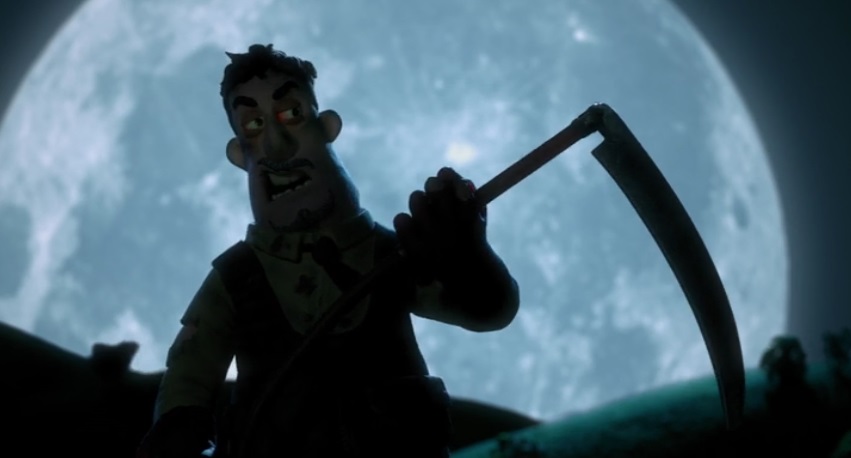
To summarise, Starzak and Burton use the form of animation to create identifiable animal characters which the audience become emotionally attached to. The animals are identifiable, exhibiting humanistic traits such as their family unity, intelligence, and sense of humour, as well as being familiar to child viewers. The line of animality and humanity is ambiguous. The self-consciousness of anthropomorphism is the most significant part of human-animal relations. They actively decide to cross spheres. Aardman’s portrayal of animals challenges our morality about our own race, and our attitudes to animals. Their secret cunning is revealed, and they seem undeserving of farming treatment. The bright colours, idealised settings, and anthropomorphism suggests that Aardman fantasises about Utopian society, in which animals and humans being can live together in harmony.
BIBLIOGRAPHY:
A Bugs Life, Dir. John Lassester, Andrew Stanton. Walt Disney Pictures 1998.
Chicken Run, Dir. Nick Parker, Peter Lord. Dreamworks 2000.
Dahl, Roald, Matilda, Reprint edition (London: Puffin Books 2007)
Derrida, Jacques, The Animal That Therefore I am (More to Follow), Critical Inquiry, Vol. 28, No. 2, translated David Wills (Winter, 2002), [accessed 14 January 2017] <http://www.jstor.org/stable/1344276?origin=JSTOR-pdf> pp. 369-481.
Keen, Richard, McCoy, Monica L., Powell, Elizabeth, ‘Rooting for the Bad Guy: Psychological Perspectives’, Studies in Popular Culture, Vol. 34, No. 2 (Spring 2012), [accessed 15 January 2017] <http://www.jstor.org/stable/23416402> pp. 129-148.
Shaun the Sheep The Movie, Dir. Mark Burton, Richard Starzak. Studiocanal, 2015.
Wallace and Gromit: A Grand Day Out, Dir. Nick Park. BBC 1990.
Wells, Paul, Animation: Genre and Authorship, (London: Wallflower Press, 2002) p. 136.
Wells, Paul, The Animated Bestiary: Animals, Cartoons, and Culture, (London: Rutger’s University Press 2008).
[1] Jacques Derrida, The Animal That Therefore I am (More to Follow), Critical Inquiry, Vol. 28, No. 2, translated David Wills (Winter, 2002), [accessed 14 January 2017] < http://www.jstor.org/stable/1344276?origin=JSTOR-pdf> pp. 373.
[2] Paul Wells, Animation: Genre and Authorship, (London: Wallflower Press, 2002) p. 136.
[3] Chicken Run, Dir. Nick Parker, Peter Lord. Dreamworks 2000.
[4] Wells, Paul, The Animated Bestiary: Animals, Cartoons, and Culture, (London: Rutger’s University Press 2008).
[5] Roald Dahl, Matilda p.28.